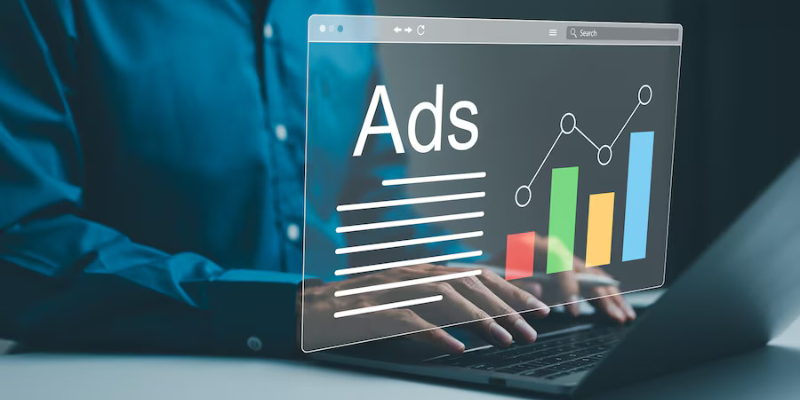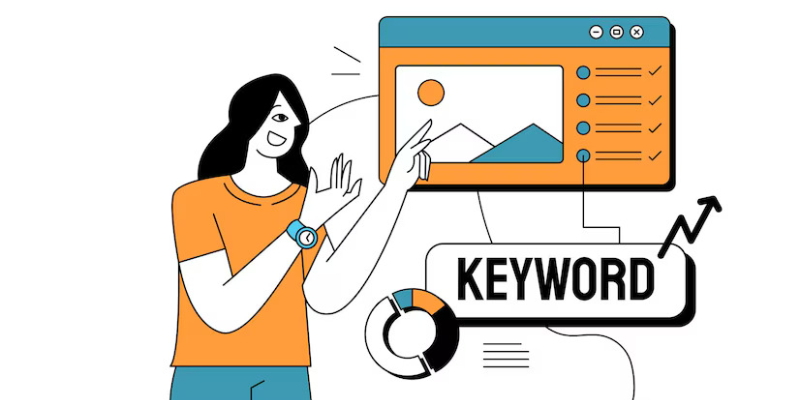

Google Adwords for business is an online advertising platform. It is an effective type of digital marketing. Now, Google AdWords is called Google Ads. It is a pay-per-click advertising platform. They are ads that show up on the search results page.
Search Ads: These ads appear at the top of the search results page or the bottom of Google. These ads will appear based on the keywords you use while searching on search engines like Google.
Shopping Ads: Shopping ads help you sell products that appear with images, detailed information about the products, their prices, and a store name where the audience can shop on Google search results. It is well-suited for e-commerce businesses.
Display Ads: Ads that feature images and videos, a place on a very vast network of websites and apps, display ads are shown. They function perfectly in increasing brand awareness as well as in retargeting.
Video Ads: Posted on YouTube and partner video sites, these can be both skippable and non-skippable. Two types include TrueView ads Bumper ads and Video Discovery ads.
Performance Max Ads: A smart campaign that helps run ads across all Google properties: Search, Display, YouTube, and many others by running a single campaign. It can be automatically optimised to get the best possible performance out of the campaign.
App Ads: These ads are mainly designed to promote phone app installations over Google's network through Search, Display, and YouTube apps. Ads are designed for app installations and in-app actions.
Local Ads: It helps businesses make their physical stores easily discoverable on local search results and Google Maps. They are designed to bring new customers and more traffic to their physical store locations.
Smart Ads: It improves the ad creation by using machine learning with user-based targeting. You just give the ad content and Google algorithms will take care of the rest to get the best performance out of the ad.
Impressions: This shows how many times users have viewed your ad.
CTR: Click-through rate; Clicks divided by Impressions, indicated as a percentage. Shows what portion of your ad viewers are clicking; in other words, CTR reflects how well your ad is piquing user interest
Conversion Rate: The amount of clicks that result in an action you want the audience to take. It measures how well your ad generates desired results.
Conversion Value: Overall revenue or value gained from conversions. It describes the return on investment (ROI) of your cost on ads.
Clicks: The total number of users who clicked on your ad.
Quality Score: Google uses quality score to find out how relevant your ads, keywords, and landing pages are to a user.
Bounce Rate Percentage: The number of users who have clicked to visit your landing page but left without interacting or taking any action. This helps to find out the relevance and quality of the landing page.
You can create a Google ads account if you have a Gmail account. Make an account for business. If you a going to create a new account, click on create account and select to manage my business. Log in to your Google account and visit ads.google.com. Then create your first campaign.
Search Engine Optimisation and Google Adwords for business are search engine marketing techniques to get more leads and traffic. A properly optimised ad campaign is quicker than Search Engine Optimisation in reaching the top spot in search results. The reason behind this is that you can aim at different keywords at a given time. You can choose to start or stop your campaigns at any time. You’ll also get visibility quickly.
Apart from increasing clicks, conversions, and traffic, it helps create brand awareness. Email marketing is the most used marketing strategy. Google included Gmail ads as part of Google Adwords for business in 2015. One of the most useful benefits of Google ads is the chance to connect again with your website visitors. This is to make people who have visited the website remember your brand.
Google ads help to easily find out who clicked on your ad, the number of leads generated, and the traffic your website got through Adwords. Keywords that helped get more leads and traffic, the cost for each lead, etc. This helps to make changes to get the best results possible.
Link Google Adwords for business to your Google Analytics account. Google Analytics gives you information on the duration for which a visitor was on a page, the number of pages visited, the bounce rate, and information about new visitors, etc.
Google Display Network is huge network of numerous apps, websites, and videos where Google ads can be spotted. It comes with Google-owned properties like YouTube and Gmail, third-party sites reaching into the millions. Google places your online ads on sites that are relevant to your business.

Keywords help show your ads if they are related to what your potential customers are searching for. Key matching types of Google Ads include broad match, phrase match, exact match, and negative keywords. These match types will give control over how closely a search query needs to match with the keyword for an ad to show.
Keywords will help you keep tabs on your ad performance, which Keywords are working and which are not, and which one of them drives the most value to clicks, conversions, and ROI. You can zero in on these metrics to fine-tune and optimise your keyword strategy in a very granular way.
Find and add negative keywords to stop ads from showing on irrelevant searches, and save the budget from unqualified clicks.
Ad groups sit within campaigns. A campaign may consist of one or more ad groups, which helps to properly organise your ads and keywords. Breaking your campaigns down to the ad group level allows for better tracking and analysing of performance. This is how you make data-driven decisions to optimise your campaigns. Targeting settings can be applied to a granular level under ad groups. This includes location targeting, device targeting, audience targeting, etc., to make sure that your ads only reach relevant users.
Landing pages are in running any campaign of Google Ads. These are pages users get directed to on your site once they click through your ad.
An effective landing page describes content that is as closely aligned as possible with the ad. Relevance will help to ensure that, when users click on your ad, they get what they expect to see, which might result in higher engagement and better conversion rates. A good landing page should have a highly prominent call to action that invites users to take some action. This call to action should be loud, compelling, and loud enough to elicit conversions effectively.

1. Try different ad formats. Based on your business requirements, choose your ads.
2. Pay only when you get results. You have to pay only when someone interacts with your ads.
3. Effectively measure your ads’s performance and make changes to your campaigns accordingly.
Bud is the best Google AdWords company in Bangalore. Seasoned digital experts at Bud can help. you make the best use of Google Adwords for business which is now known as Google Ads. Apart from other advertising services, we also provide Google AdWords Services. In an age where being present online is an absolute necessity, we are here to help you run successful Google Ads campaigns and build maximum awareness for your brand.